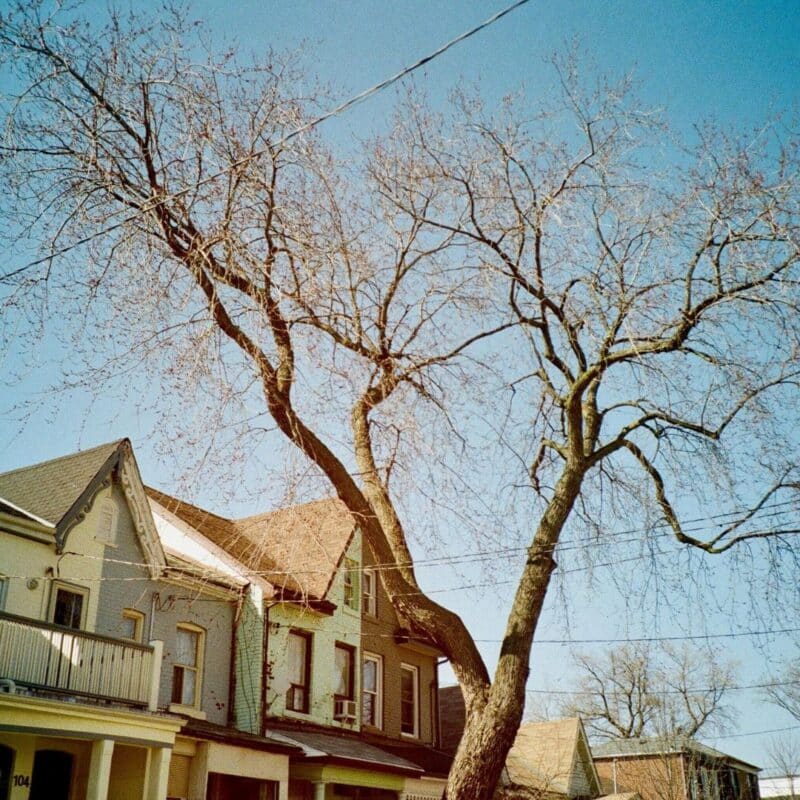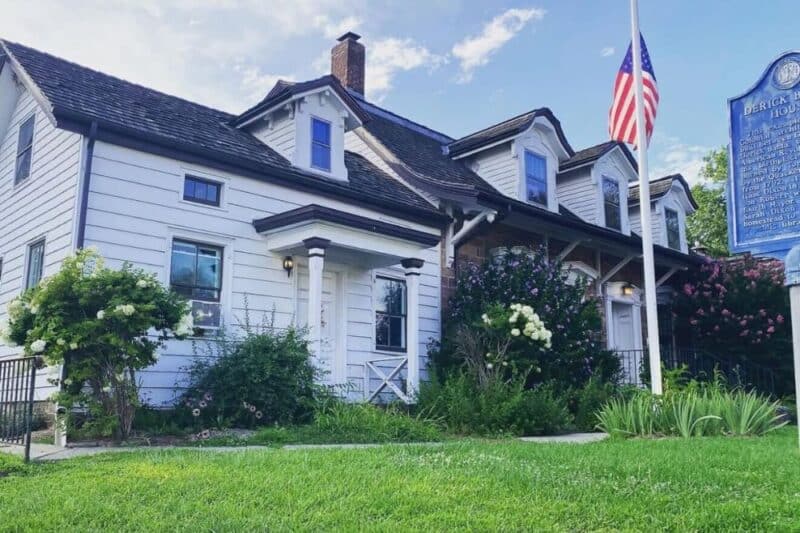Bergen County has a rich and detailed history spanning back centuries. Since 1683, this county has flourished to house over 950,000 people. Historically, the homeland of the Lenape, Bergen County, was initially settled by Dutch colonists and later by English colonists. Many of these colonial-era homes inhabited by early settlers have been lost to time, but some remain and are even used as a library. We are lucky to live in such a history-filled area, and today, we are going to explore some of Bergen County’s oldest and most noteworthy historical homes. Read on to learn about 13 of the oldest surviving homes and their histories in Bergen County, New Jersey.

Abraham A. Haring House | Piermont Road Near Rockleigh Road, Rockleigh
The Abraham A. Haring House was built around 1758 by Abraham A. Haring on his 200-acre farm. Abraham served in the Revolutionary War as a captain in the Bergen County Militia. Unfortunately, he was captured by the British, imprisoned in New York City, and died in 1780. In 1805, his grandson Abraham sold the house to Moses Taylor Jr, and it stayed in the Taylor family until 1905.
Read More: 12 Activities for Your Bergen County Spring Bucket List 2025
Ackerman–Zabriskie–Steuben House | 1209 Main Street, River Edge
The Ackerman–Zabriskie–Steuben House, built in 1745, is a noted example of a Bergen Dutch sandstone home. It was confiscated by the state from Loyalist Jan Zabriskie and used as a military headquarters during the Revolutionary War. After the war, it was given to Major General Baron von Steuben, a German-born American army officer. He lived here from 1783 to 1788. Today, the Bergen County Historical Society operates the spot as part of the Historic New Bridge Landing.
Blanch-Haring House | Lafayette Road + Hackensack Avenue, Harrington Park
The Blanch-Haring House was the home of Isaac Blanch. Isaac was captured during a British raid in 1777 and spent several months in prison. He was released in January 1778 as part of a prisoner exchange. In 1788, the home was sold to David Haring and stayed in his family for almost a century. Harrington Park is named after the Haring family.
Cole-Allaire-Boyd House | Grand Avenue + Prospect Street, Leonia
Built around 1765, the Cole-Allaire-Boyd House is the oldest surviving house in Leonia. It was first the home of Samuel Cole, a Loyalist, who betrayed the location of many Patriots to the British. In 1916, artists Rutherford Boyd and Harriet Repplier Boyd purchased the home, and it has been in the family since.
Cornelius Lozier House | Goffle Road + Paterson Avenue, Midland Park
The Cornelius Lozier House was built around 1775 and first appeared on a map in 1780, made by Robert Erksine, who is actually buried near the house. Robert was born in Scotland and later immigrated to Colonial America.
Daniel Demarest House | 404 Washington Avenue, Dumont
Located at 404 Washington Avenue in Dumont, this home was built in 1724 by James P. Demarest. In 1850, a descendant restored the home after a fire.
Derrick Banta House | 180 Washington Avenue, Dumont
View this post on Instagram
During the Revolutionary War, Derick Banta served as a private in Bergen County Militia. He lived in Dumont when it was called Schraalenburgh, and grew up at what is now 180 Washington Avenue. In 1778, Loyalists burned his home and barn, and Derick was forced to rebuild between 1780 and 1790. In 1792, Derrick’s wife, Elizabeth, sold the home to Jacob Quackenbush, and it stayed in his family until 1862, when it was sold to Isaac Dixon. Isaac’s son Robert was the fourth mayor of Dumont, and his daughter Sarah Ann left the home to the Dumont community. Thus, since 1926, this historic spot has been used as the Dixon Homestead Library, the community’s public library.
Garret Durie House | 156 Ell Road, Hillsdale
This house was built in 1767 by blacksmith and farmer Garret Durie, who also served as a Bergen County Freeholder, Justice, and Judge. During the Revolutionary War, the Durie house, farm, and blacksmith shop were plundered by both American and British troops. The stolen property included sheep, a horse, hammers, a pick iron, and much more. This home was later passed to the Terhune and Hopper families.
Henry Naugle House | 119 Hickory Lane, Closter
According to tradition, the Henry Naugle House in Closter was built in 1736, but based on architectural evidence it may have been between 1750 and 1760. The home was expanded by a two-and-one-half-story Victorian wing and again in 1951.
Issac Naugle House | 80 Hickory Lane, Closter
View this post on Instagram
According to tradition, Hendrick Naugle owned land in this area of Closter. In the 1740s, he married Catherine Blauvelt, and they had seven children. Their son Isaac most likely built the house here in 1775.
Naugle House | 42-49 Dunkerhook Road, Fair Lawn
View this post on Instagram
The Naugle House in Fair Lawn was built around 1745 on a small hillside along Saddle River. The home was built by Jacob Vanderbeck Sr., who also built the neighboring Jacob Vanderbeck Jr. House. The Marquis de Lafayette may have visited the home in 1824. The home borders the Saddle River County Park, making it simple for history and nature lovers to get a two-for-one deal. Like many colonial-era homes, the Naugle House faced the threat of time, but has been preserved. In 2010, Fair Lawn purchased the Naugle House for $1,700,000 through a combination of municipal, county, and state funds to protect the house and conserve its natural surroundings.
The Hermitage | 335 North Franklin Turnpike, Ho-Ho-Kus
View this post on Instagram
The Hermitage is a staple in Ho-Ho-Kus history. This historic spot, built around 1760, looks very different today, but some parts of the original home remain. During the Revolutionary War, this was the home of British officer Lieutenant Colonel James Marcus Prevost and his wife, Theodosia. Theodosia was friendly to American soldiers, and in July 177,8 she extended an invitation to George Washington to use her home as a headquarters. James died in 1781 and Theodosia remarried the following year to Aaron Burr. Aaron Burr later went on to serve as the third US Vice President who later fatally (and famously) wounded Alexander Hamilton at a duel in Weehawken.
See More: A Look Into the Historic Ballantine House in Newark + Its Recent Restoration
Van Allen House | Corner of U.S. 202 + Franklin Avenue, Oakland
The Van Allen House was built around 1740 by Hendrik Van Allen, a farmer. During the Revolutionary War, it served as the headquarters for George Washington on July 14th, 1777. In 1778 and 1779, Bergen County used the house as a court. When Hendrik died, his property passed on to his children, and various families lived here for over a century. Later on, the home was owned by Edward Day Page, a dairy farmer and Oakland mayor. After Edward and some other inhabitants had left, the structure was abandoned in the 1950s and faced vandalism and demolition threats. This home was saved from demolition by the Oakland Historical Society and the Women’s Club of Oakland.










